Arif Ahmed
The University of Arizona
Comparative Evaluation of Text and Audio Simplification: A Methodological Replication Study
Aug 20, 2025Abstract:This study serves as a methodological replication of Leroy et al. (2022) research, which investigated the impact of text simplification on healthcare information comprehension in the evolving multimedia landscape. Building upon the original studys insights, our replication study evaluates audio content, recognizing its increasing importance in disseminating healthcare information in the digital age. Specifically, we explored the influence of text simplification on perceived and actual difficulty when users engage with audio content automatically generated from that text. Our replication involved 44 participants for whom we assessed their comprehension of healthcare information presented as audio created using Leroy et al. (2022) original and simplified texts. The findings from our study highlight the effectiveness of text simplification in enhancing perceived understandability and actual comprehension, aligning with the original studys results. Additionally, we examined the role of education level and language proficiency, shedding light on their potential impact on healthcare information access and understanding. This research underscores the practical value of text simplification tools in promoting health literacy. It suggests the need for tailored communication strategies to reach diverse audiences effectively in the healthcare domain.
SARAL-Bot: Autonomous Robot for Strawberry Plant Care
Jun 07, 2025Abstract:Strawberry farming demands intensive labor for monitoring and maintaining plant health. To address this, Team SARAL develops an autonomous robot for the 2024 ASABE Student Robotics Challenge, capable of navigation, unhealthy leaf detection, and removal. The system addresses labor shortages, reduces costs, and supports sustainable farming through vision-based plant assessment. This work demonstrates the potential of robotics to modernize strawberry cultivation and enable scalable, intelligent agricultural solutions.
Automated Feedback Loops to Protect Text Simplification with Generative AI from Information Loss
May 22, 2025Abstract:Understanding health information is essential in achieving and maintaining a healthy life. We focus on simplifying health information for better understanding. With the availability of generative AI, the simplification process has become efficient and of reasonable quality, however, the algorithms remove information that may be crucial for comprehension. In this study, we compare generative AI to detect missing information in simplified text, evaluate its importance, and fix the text with the missing information. We collected 50 health information texts and simplified them using gpt-4-0613. We compare five approaches to identify missing elements and regenerate the text by inserting the missing elements. These five approaches involve adding missing entities and missing words in various ways: 1) adding all the missing entities, 2) adding all missing words, 3) adding the top-3 entities ranked by gpt-4-0613, and 4, 5) serving as controls for comparison, adding randomly chosen entities. We use cosine similarity and ROUGE scores to evaluate the semantic similarity and content overlap between the original, simplified, and reconstructed simplified text. We do this for both summaries and full text. Overall, we find that adding missing entities improves the text. Adding all the missing entities resulted in better text regeneration, which was better than adding the top-ranked entities or words, or random words. Current tools can identify these entities, but are not valuable in ranking them.
Effects of Added Emphasis and Pause in Audio Delivery of Health Information
Apr 29, 2024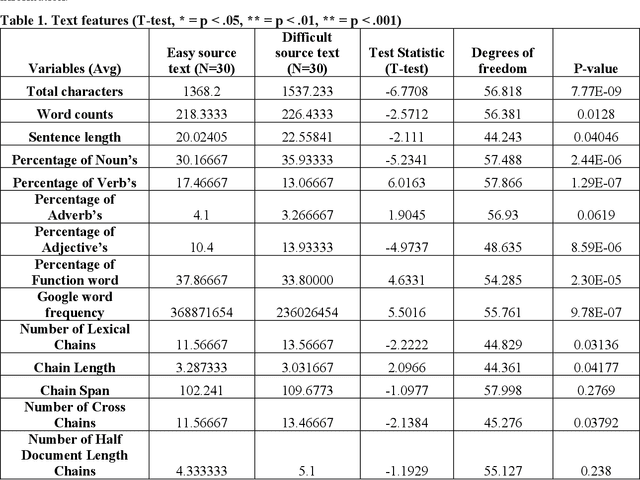
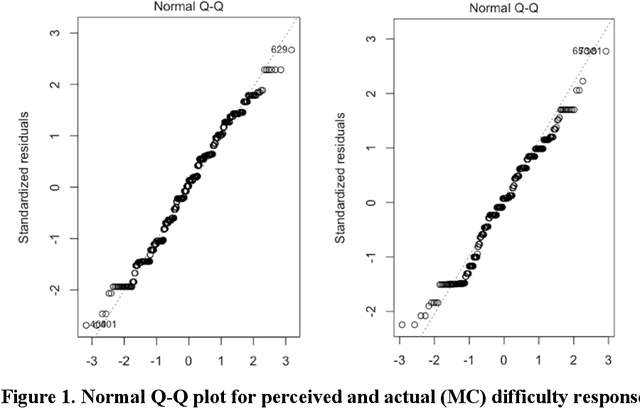


Abstract:Health literacy is crucial to supporting good health and is a major national goal. Audio delivery of information is becoming more popular for informing oneself. In this study, we evaluate the effect of audio enhancements in the form of information emphasis and pauses with health texts of varying difficulty and we measure health information comprehension and retention. We produced audio snippets from difficult and easy text and conducted the study on Amazon Mechanical Turk (AMT). Our findings suggest that emphasis matters for both information comprehension and retention. When there is no added pause, emphasizing significant information can lower the perceived difficulty for difficult and easy texts. Comprehension is higher (54%) with correctly placed emphasis for the difficult texts compared to not adding emphasis (50%). Adding a pause lowers perceived difficulty and can improve retention but adversely affects information comprehension.
A Review on Edge Analytics: Issues, Challenges, Opportunities, Promises, Future Directions, and Applications
Jul 01, 2021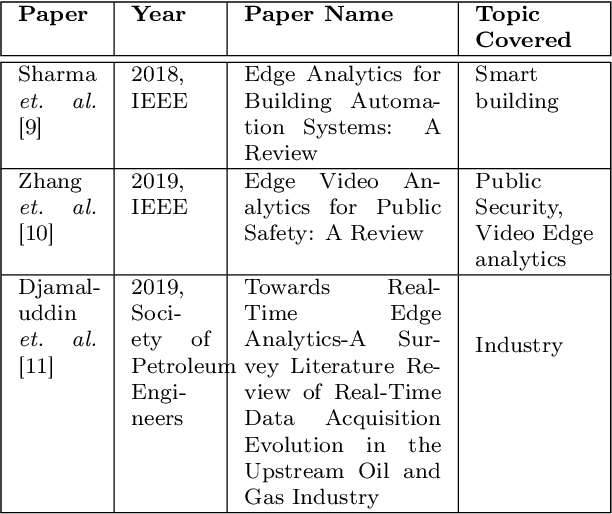
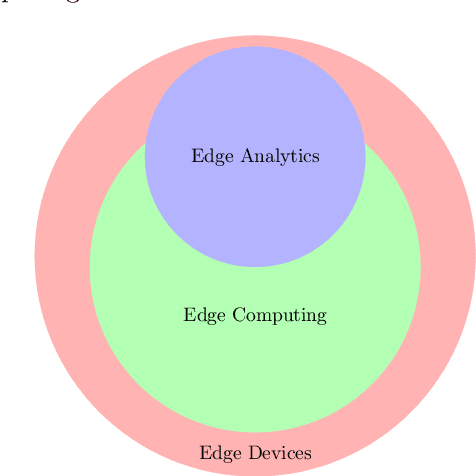
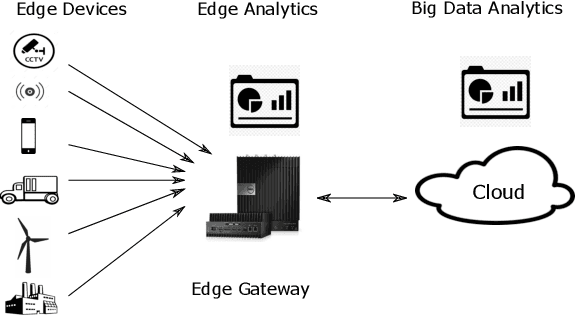
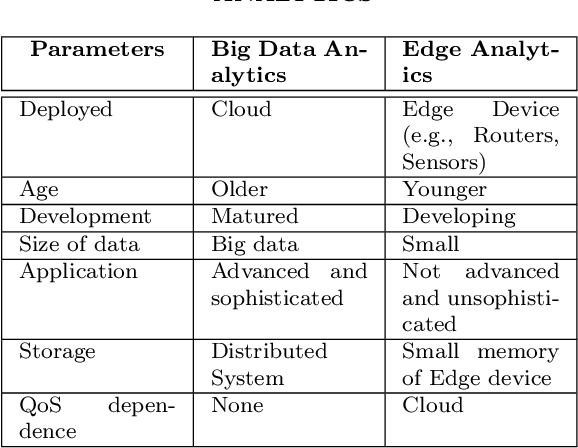
Abstract:Edge technology aims to bring Cloud resources (specifically, the compute, storage, and network) to the closed proximity of the Edge devices, i.e., smart devices where the data are produced and consumed. Embedding computing and application in Edge devices lead to emerging of two new concepts in Edge technology, namely, Edge computing and Edge analytics. Edge analytics uses some techniques or algorithms to analyze the data generated by the Edge devices. With the emerging of Edge analytics, the Edge devices have become a complete set. Currently, Edge analytics is unable to provide full support for the execution of the analytic techniques. The Edge devices cannot execute advanced and sophisticated analytic algorithms following various constraints such as limited power supply, small memory size, limited resources, etc. This article aims to provide a detailed discussion on Edge analytics. A clear explanation to distinguish between the three concepts of Edge technology, namely, Edge devices, Edge computing, and Edge analytics, along with their issues. Furthermore, the article discusses the implementation of Edge analytics to solve many problems in various areas such as retail, agriculture, industry, and healthcare. In addition, the research papers of the state-of-the-art edge analytics are rigorously reviewed in this article to explore the existing issues, emerging challenges, research opportunities and their directions, and applications.
Fingertip Detection and Tracking for Recognition of Air-Writing in Videos
Sep 09, 2018



Abstract:Air-writing is the process of writing characters or words in free space using finger or hand movements without the aid of any hand-held device. In this work, we address the problem of mid-air finger writing using web-cam video as input. In spite of recent advances in object detection and tracking, accurate and robust detection and tracking of the fingertip remains a challenging task, primarily due to small dimension of the fingertip. Moreover, the initialization and termination of mid-air finger writing is also challenging due to the absence of any standard delimiting criterion. To solve these problems, we propose a new writing hand pose detection algorithm for initialization of air-writing using the Faster R-CNN framework for accurate hand detection followed by hand segmentation and finally counting the number of raised fingers based on geometrical properties of the hand. Further, we propose a robust fingertip detection and tracking approach using a new signature function called distance-weighted curvature entropy. Finally, a fingertip velocity-based termination criterion is used as a delimiter to mark the completion of the air-writing gesture. Experiments show the superiority of the proposed fingertip detection and tracking algorithm over state-of-the-art approaches giving a mean precision of 73.1 % while achieving real-time performance at 18.5 fps, a condition which is of vital importance to air-writing. Character recognition experiments give a mean accuracy of 96.11 % using the proposed air-writing system, a result which is comparable to that of existing handwritten character recognition systems.
 Add to Chrome
Add to Chrome Add to Firefox
Add to Firefox Add to Edge
Add to Edge